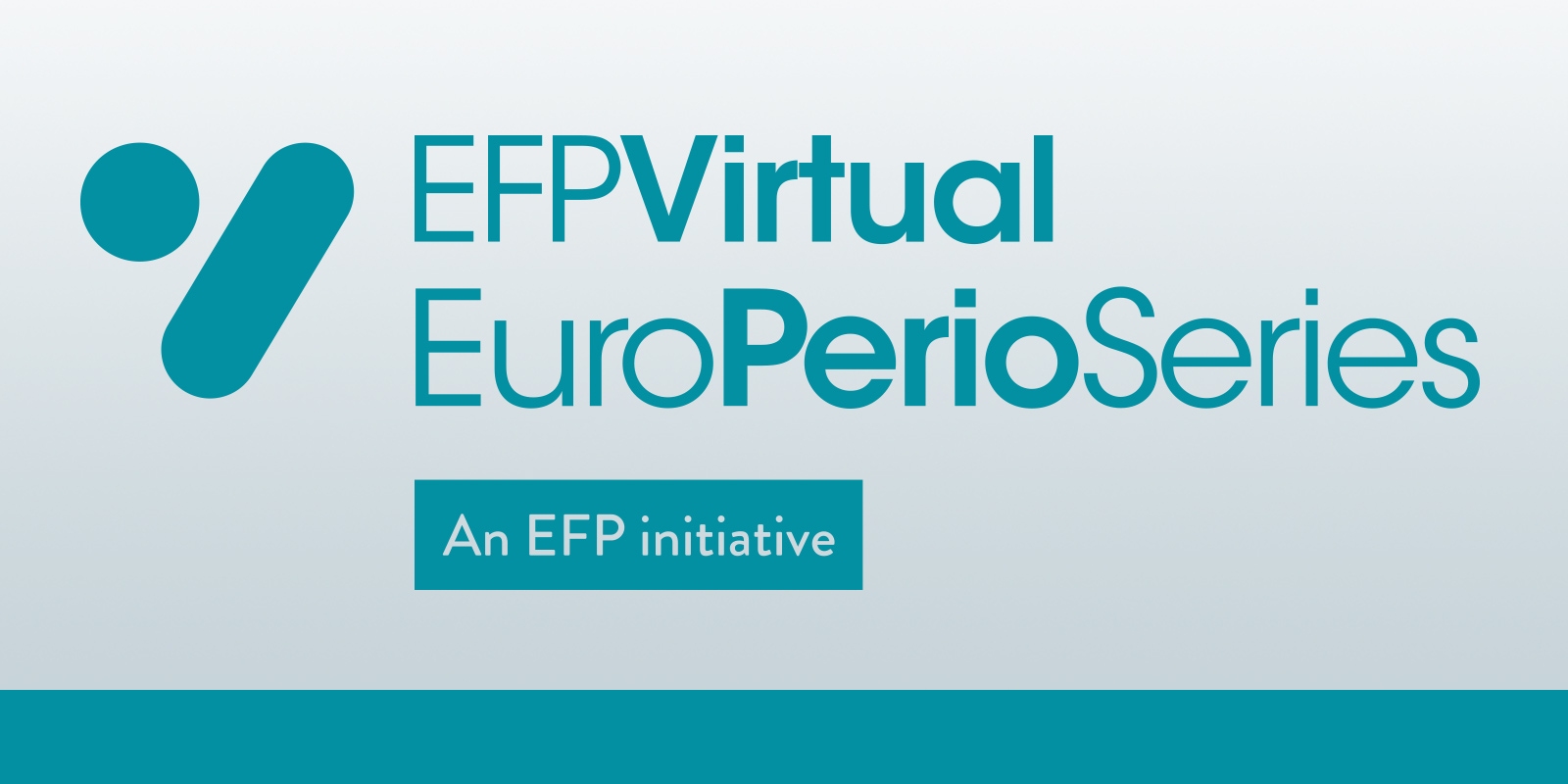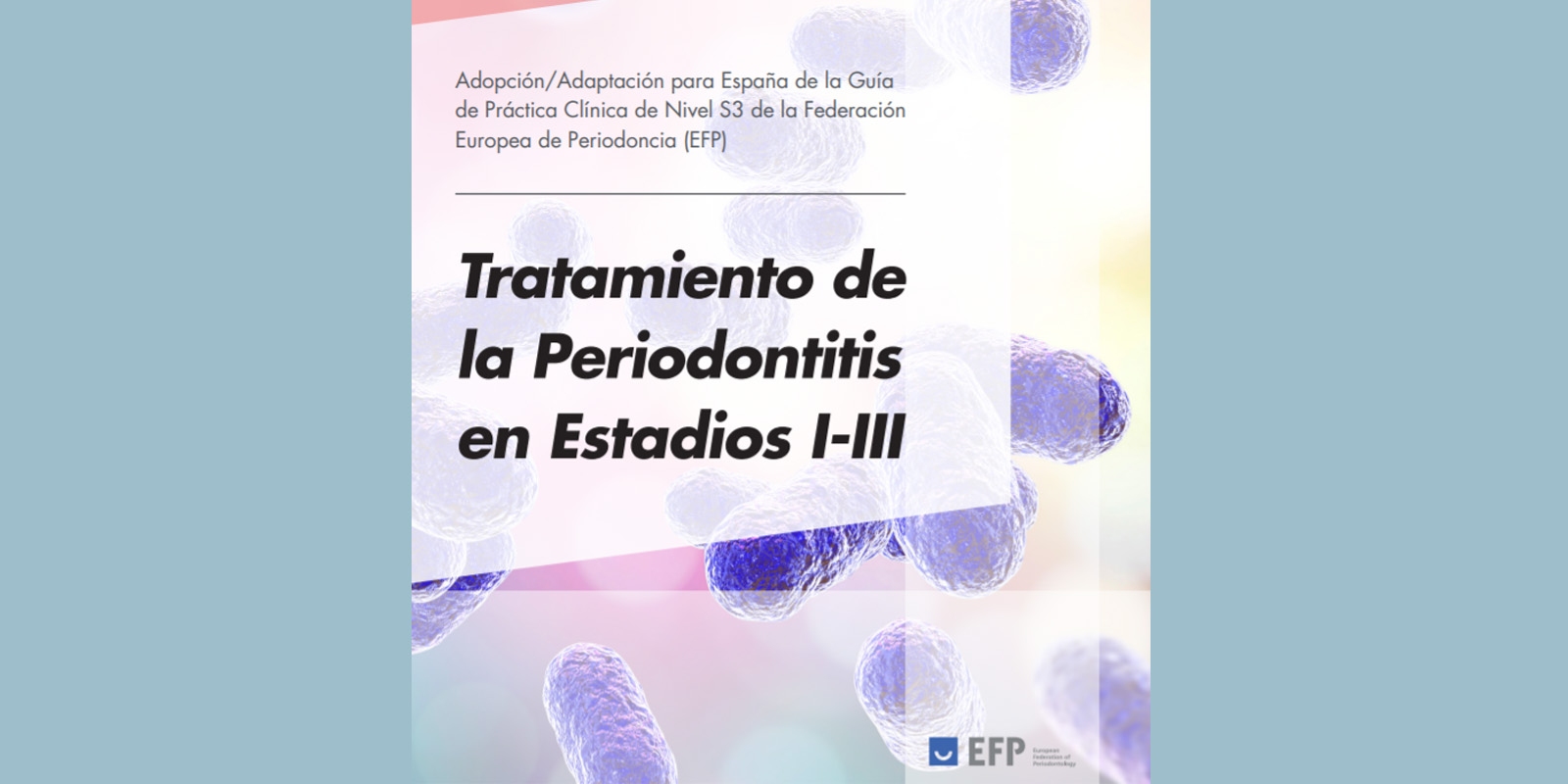DENTAID EXPERTISE
News for dentistry professionals
New periodontal and peri-implant disease classification gets good reception
10 Mar 2020

Over a year after its official presentation at SEPA Seville´18 and EuroPerio9 in Amsterdam in June 2018, not only has the new classification of periodontal and peri-implant diseases received the support of leading international experts, but its use is beginning to extend into daily clinical practice.
Master in Periodontics and Implant Dentistry from the Complutense University of Madrid (UCM), Dr Elena Figuero says “We need to overcome the fear of using this classification, because it is really very easy to manage; although the tables included may initially seem complex, they are very intuitive and practical since they now have new algorithms that make them easy to use.” Additionally, in the opinion of this expert, "this happens to be one of the most outstanding developments in the field of periodontics and implant therapy that have come about in the last two decades."
Dr Figuero points out that “the classification allows all clinicians to diagnose patients in a more protocolised, objective manner, as it has several clear, specific and objective sections that allow us to define the status of the disease.”
Dr Mariano Sanz, a Professor of Periodontics at the UCM and one of the leading experts involved in the development of this new classification, values the reception he is getting from the international dental community very positively, although he acknowledges it is still too early to make a full assessment.
"Distribution of informational materials on this classification was made a few months ago and we are still awaiting its impact on clinical practice, and also on the research that is beginning to be carried out," he admits. In any case, in his opinion, "the impact is amazing, almost unexpected."
In seeking to decipher its key to success, Professor Sanz maintains that “the concept of the classification that has been developed really helps patients learn about the disorder they have and the extent thereof. In addition, it is a very useful tool for professionals themselves, as establishing stages and degrees of periodontitis, for example, helps us to better consider the treatment options for each particular case; and of course, this management system greatly improves our ability to work as a team.”
As Dr Agustín Casas, a Master in Periodontics and Implant Dentistry from the Complutense University of Madrid (UCM), emphasises, “this new classification is intended to remain with us for a long time, since it has been designed in such a way that minor modifications can be made, or subgroups added, which will allow us to incorporate future understanding and evidence without having to develop a new classification.”
NOVELTIES AND IMPLICATIONS
The main novelty of the new classification is the fact it categorises periodontitis in stages and degrees. The concepts of aggressive periodontitis and chronic periodontitis disappear, and periodontitis is referred to as a single disease. Although it is considered as a single entity, it is classified in stages depending on its severity and on the complexity of its treatment, and also distinguishes degrees according to its aggressiveness and the risk factors that the patient may present. Dr Figuero elaborates, specifying that “periodontitis is classified in four stages and three degrees.”
The new classification not only covers all periodontal and peri-implant diseases, but also clinical conditions associated with other diseases that are frequently treated in clinical practice (such as periodontal abscesses, for example). Likewise, a subsection for peri-implant diseases is included, in which peri-implant mucositis and peri-implantitis are precisely defined. Changes with regard to gum disease, abscesses or necrotising periodontal disease are also included.
As Mariano Sanz points out, “we have opted for an approach similar to the classification used in oncology, where the definition in stages allows one to immediately ascertain the degree of severity and complexity, thereby establishing the aggressiveness of the disease or the weakness of the patient suffering from the disease.”
Besides the utility of this new classification in research, the classification will likely have positive repercussions in the clinical management of patients. In the opinion of Dr Mariano Sanz, “this classification allows for much more transparent, effective communication between professionals and patients, since it will be easier to convey the type of treatment necessary for each stage of the disease and the greater or lesser rigour of the preventive guidance, depending on the degree of the disease.” In addition, Elena Figuero points out that it solves a common problem in clinical practice, “given the difficulty of diagnosing certain patients, especially when we had to distinguish between aggressive and chronic periodontitis.”
BROAD CONSENSUS, WITH A SPANISH HALLMARK
All told, the significance and novelty of this new classification lie fundamentally in the fact that it enjoys broad consensus. For the first time ever, the world’s two most important scientific organisations in the field, the European Federation of Periodontology (EFP) and the American Academy of Periodontology (AAP), have come together to organise a meeting to develop and approve a classification that is to be truly global and to be implemented throughout the world.
Some of the foremost Spanish experts, leading lights in the world of periodontics, have participated in the development and subsequent discussion on this classification. In general, they consider that it brings significant benefits and that it allays some of the existing shortfalls in the detection and management of these diseases.
And this new classification is the fruit of a joint international effort in which Spanish experts have played a considerable part which, incidentally, reveals the leadership role of Spanish periodontics worldwide. In a global workshop, led by Professor Mariano Sanz, European and North American experts agreed for the first time on the joint drafting of a periodontal and peri-implant disease classification, with the participation of Spaniards David Herrera, Elena Figuero, Juan Blanco and Gustavo Ávila.
DISSEMINATION BY THE EFP
The ultimate implementation of this new classification necessarily requires its general acceptance and acknowledgement, hence the important labour that is being carried out by institutions such as SEPA and EFP to disseminate the guidelines.
EFP’s quarterly magazine, Perio Insight (https://www.efp.org/newsupdate/insight/clinicians-welcome-new-classification/), which focuses on science and clinical practice, published an article in its informational pages compiling the concerns the classification has raised.
In general, the opinion of Europe’s leading experts is very positive, highlighting, above all, the meticulousness with which patients can be diagnosed or the ease with which the disease can be defined, as it has been possible to unify the criteria for classification which had previously been diverse and not as detailed; however, they warn, for example, that the implementation process may take more than two years to become effective at generalist clinics.
Under the title Clinicians welcome new classification but raise concerns about implementation, Perio Insight interviewed several international periodontics experts, including Norway's Kristin Kolltveit, Portugal’s Ricardo Faria and Peter Eickholz from Germany, who expressed their concerns and shared their verdict on the new guide to diagnose periodontal and peri-implant diseases.
Furthermore, Perio Insight also published an article in their 2018-2019 winter edition (https://www.efp.org/publications/perioinsight/perioinsight09/) on the impact the new periodontal and peri-implant diseases and conditions classification would have at the research level.
Additionally, in order to facilitate the dissemination and understanding of the main arguments and measures contemplated by the new classification of periodontal and peri-implant diseases, the EFP has developed a series of very practical and simple informative contents available for consultation and free download (https://www.efp.org/publications/projects/new-classification/index.html). These tools are designed to help periodontists and other dental professionals implement the new classification in their daily practice; the kit includes guidance notes, expert presentations, infographics and videos, as well as consensus reports.
RELATED ARTICLES

17 Feb 2022
EuroPerio Series: professional discussions and scientific exchange
To keep the global perio community up to date with the latest research findings as well as give a taster of what is to come at EuroPerio10, the…

21 Jan 2022
Xerostomia in COVID-19 positive patients: clinical considerations
Severe Acute Respiratory Syndrome Coronavirus 2 (SARS-CoV-2) the cause of the pandemic known as COVID-19, affects different organs and systems (lungs,…

20 Jan 2022
A guide adapted to Spain to optimise the approach to periodontitis
There are currently numerous clinical practice guidelines to direct the treatment of many systemic diseases (such as diabetes, depression,…
Sign up for the DENTAID Expertise newsletter
Sign up for the newsletter